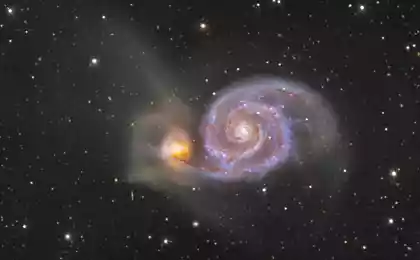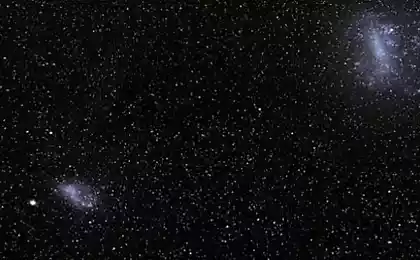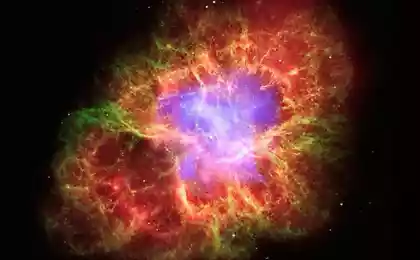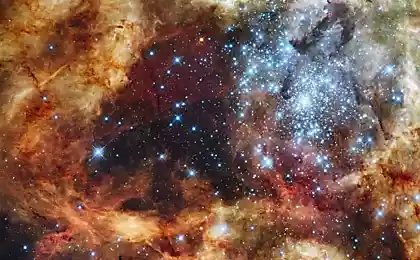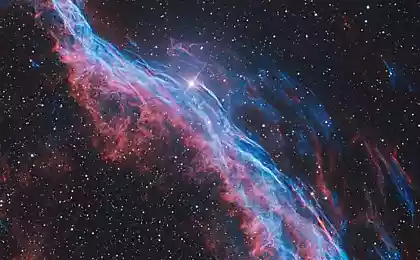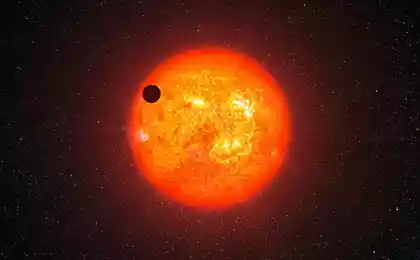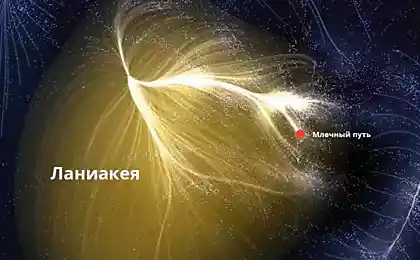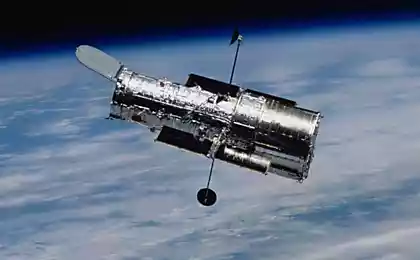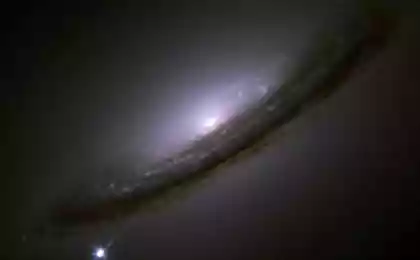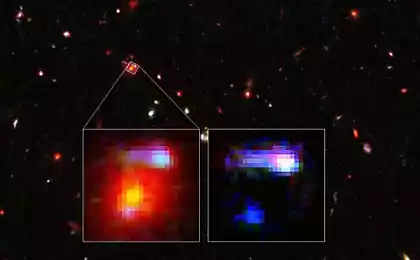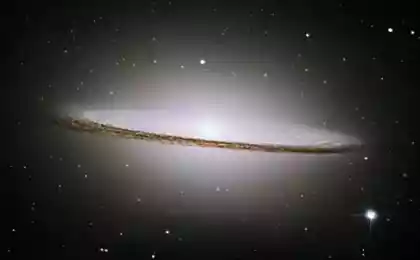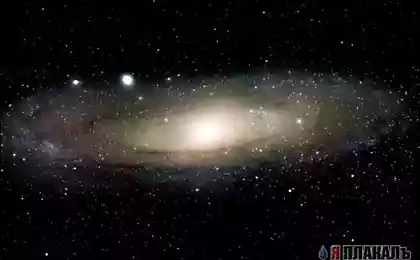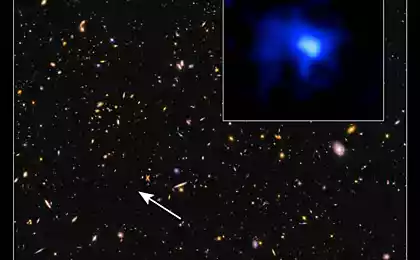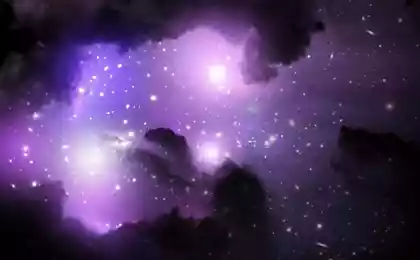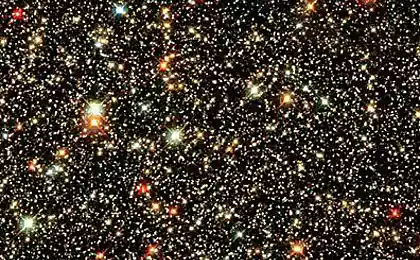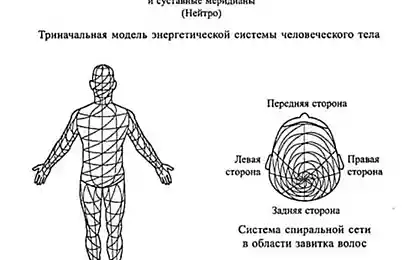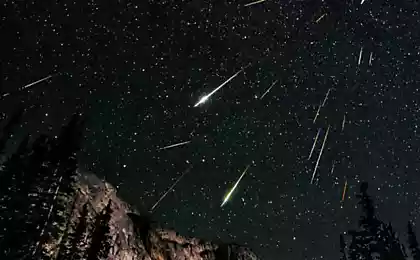901
Modeled spiral galaxy with a secret
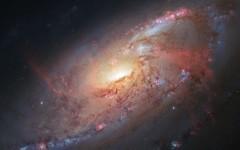
The space telescope "Hubble" from the NASA / ESA with the help of amateur astronomers modeled one of the best existing image of the spiral galaxy next to us - Messier-106
By cosmic standards Messier-106 - practically our neighbor: it is located 20 million light-years. This is one of the brightest and closest spiral galaxies to us.
Despite the fact that apparently Messier-106 looks just like countless other galaxies, it hides a number of secrets. Thanks to the image formed on the basis of images obtained with the help of "Hubble" and amateur astronomers Robert Gendler laboratories and Jay Gabanna, scientists have the most accurate data.
The core of the galaxy is a supermassive black hole (which is typical for most other galaxies) which in comparison with other black holes is particularly active. For example, the core of the Milky Way rather rarely draws in gas, while the black hole Messier-106 absorbs material. Due to the large amount of gas drawn into the black hole, it heats up and starts to emit intense radiation. Part of this radiation is similar to the principle of the laser radiation, although in this case we are dealing with its microwave option.
In the galaxy there is another strange thing: instead of the usual two hands (arms) at the Messier-106 are four of them. Although the second pair of arms can be seen on conventional images in the form of ghostly clumps of gas on the pictures made outside the visible spectrum, as x-rays or radio waves, the pair of arms is visible even better.
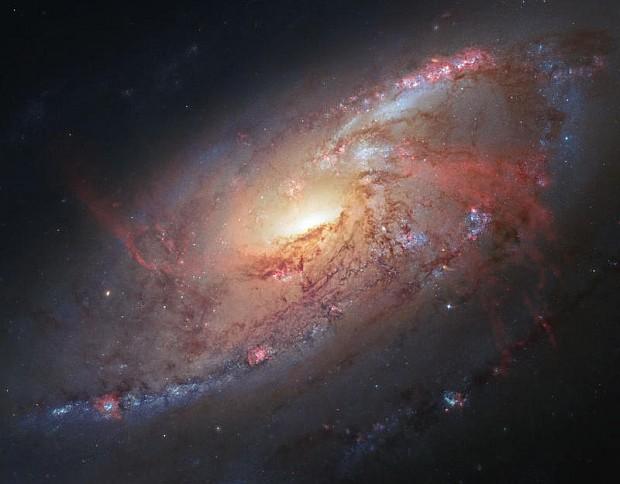
This image combines observations of "Hubble" for the M-106 and additional data from amateur astronomers Robert Gendler and Jay Gabanna. Gendler put together data "Hubble" with their own observations and got a bright color image. Messier 106 - relatively close to our spiral galaxy, which is located about 20 million light-years from Earth.
Unlike normal branches, two additional process-arms consist of hot gas, not stars, whose origin remained a mystery until recently. Astronomers believe that the processes are formed by the same radiation emanating from the black hole Messier-106, so they differ from ordinary star branches.
Additional sleeves, apparently formed by compacted layers of gas and is a byproduct of its build-up near the nucleus of the galaxy. The newly-formed jets of matter moving through the galaxy, heating it and punching gases, which in turn causes them to glow brightly. This material is located closer to the center of the galaxy, so these processes appear to be straight. However, the more rarefied the gas becomes as the distance from the nucleus of the disc, the more it is twisted around the core, forming a red spiral processes, seen from Earth.
Despite the fact that the galaxy is named after the astronomer Charles Messier of the XVIII century, it was not open to these scientists, and it was not included in their catalogs. The galaxy was discovered by his assistant Pierre Mecheynom, but during his life as it was not included in the catalog. Galaxy was registered only in the twentieth century, along with six other outdoor objects.
Amateur astronomer Robert Gendler used archival images Messier-106, made by "Hubble" to create the image center of the galaxy. Later, he added to the information received also information from astrophotographer Jay Gabanna and new data from the "Hubble", such as photo inaccessible areas.
Image central galaxy modeled almost entirely on the basis of images obtained using the "Hubble", images captured using the improved research camera field of third generation chamber and the two planetary field and photodetectors. Image outer spiral processes also modeled basically telescopic NASA, but there have also been used images obtained with 12, 5 and 20-inch telescopes Gendler and Gabanna located in remote areas of dark New Mexico, USA.
Gendler won the last contest imaging "Hidden Treasures", announced by developers "Hubble." The second winner was Andre van der Hoeven, who combined in his competition project developments "Hubble" and the data of the National Optical Astronomy Observatory.
Scientists: the ozone hole affects the processes of the World Ocean
Causes and consequences of the fall of the meteorite Chelyabinsk
